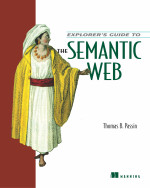 Enterprise Service Bus
Enterprise Service BusDavid Chappell
2004, 352 pages
ISBN-10: 0596006756
ISBN-13: 978-0596006754
This is a review of the best known ESB text from David Chappell.
Main Points
If you don't have a chance to read the book, here are the main points covered on ESB:
- ESB is the next generation of application integration, following the EAI hubs of yesterday.
- ESB is a Message Oriented Middleware (MOM) solution - it creates loosely coupled integrations by enabling integrated applications to simply post messages to the ESB and the ESB handles the rest.
- An ESB is more than just a queue, it can perform sophistacated routing logic to route the messages in different ways based on the contents of the message.
- ESB enables a distributed deployment model - each business unit/office can host their own ESB. Many messages will likely stay within the same ESB instance. Only some messages need to be routed to a different ESB instance.
Summary: This is a great book for those who know nothing of ESB already. However, if you are already up to speed on the current trends in IT or enterprise software, this book probably won't provide much new material for you. To the credit of David et al, ESB has been mainstream for years now and you probably already know what is inside.
Details: This is a well written book, and something I would recommend for anyone who is unfamiliar with the premise of ESB. It is an O'Reilly book, but one that isn't focused on developers.
Which leads to the main drawback for me - I was expecting more technical depth. If you are a developer, and want to see lots of code samples, this isn't the book for you. This is aimed more at enterprise architects and IT business owners.




